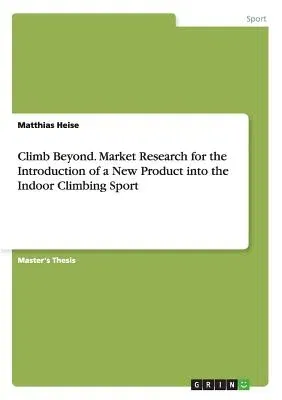Master's Thesis from the year 2012 in the subject Sport - Sport
Economics, Sport Management, grade: 2, Vienna University of Economics
and Business (WU Executive Academy), course: Entrepreneurship &
Innovation, language: English, abstract: For about two decades indoor
climbing became a trend in adrenalin sports. In many Western countries
climbing halls of huge size have been build. Most urbanized citizens at
least tried it once. But even though the climbing community is huge,
only a few starters remain active or advance in skills and techniques.
The business background of this research is a new product that is able
to track the movement of any professional climber and re-project the
shape of the body to help an inexperienced climber to make his next best
move while being stuck on the wall. This will help less skilled users to
advance and enjoy climbing even more. The applications for this product
are numerous but the market is highly uncertain. Therefore this study
tries to reveal why most users do not advance and it identities common
problems and barriers that most climbers have to face. How do they get
over them or why do they stumble. After having a deeper insight into the
indoor climbing market, the possible market size and user acceptance for
the new product can be estimated more accurately. This thesis is seen as
an opportunity assessment reducing uncertainty before bringing the
product into the market.


